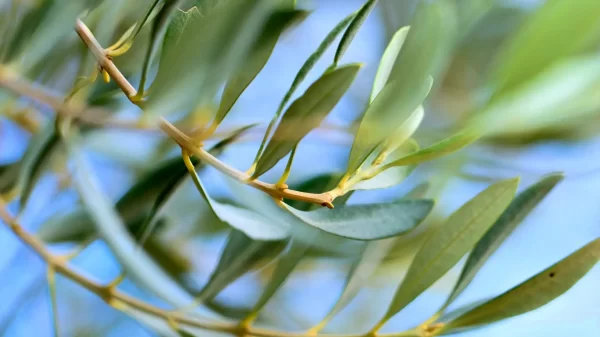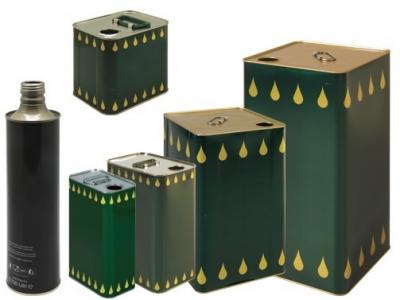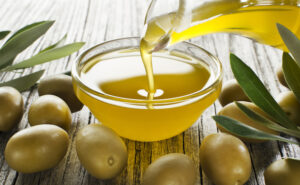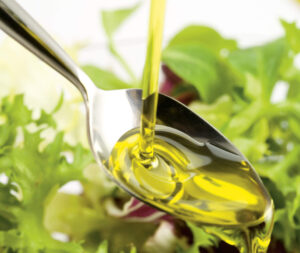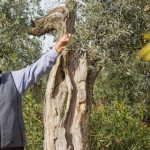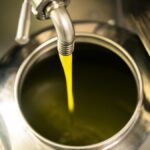
Most fruit, when juiced or processed, is initially subjected to a process removal of seeds, kernel and often too of the peel. I'll give two examples: to make a squeeze of plum juice the fruits must be pitted and peeled; to make apricot fruit juice the seed must be removed from each fruit. Olives, however, seem to be an exception.
In fact, if we use them for cooking we do not peel them or pit them, but use them as they are in their entirety; if we put them in brine or salt or bake them to use them as table olives, we do not peel them and usually do not remove the stone, except in particular cases.
The same value for the production of oil: the olives are not peeled. Indeed: everything is done to protect and not ruin the peel.
After an initial interest since Roman times, we began to talk about pitting at the beginning of the twentieth century, because it was precisely in these years that olive growing began to evaluate the use of new techniques for extraction. AND with the spread of continuous cycle systems and in particular with theadoption of three-phase decanter the problem of pitting has been addressed at an industrial level.
The reasons for this interest, possible thanks to new technologies, were essentially two.
The first of a technical nature: attempt to increase the processing capacity of the plants reducing the weight of the olive paste to be extracted by approximately 25/30%, as it lacks the solid central part of the drupe.
The second: obtain a product consisting solely of the oil present in the drupe pulp, avoiding contamination by the oil and enzymes naturally present in the kernel.
Even though the technique was constantly evolving, the results were not particularly positive: yields also decreased by 2%; The extraction capacity decreased instead of increasing as the lack of stones forced a reduction in the decanter's feed flow rate due to a more difficult separation; the parameters of product quality did not change (and therefore there was no possibility of recovering olives that could produce a lampante or virgin oil) and last but not least there was an increase in bitterness and spiciness, i.e. in phenols, which reached up to 10%, simply due to a greater concentration of phenolic substances, the total quantity of which did not vary compared to integral processing, but was dissolved in a smaller quantity of pasta.
These are the main reasons why pitting never caught on until the beginning of the new century, when greater consumer attention to organoleptic aspects and a new approach to the processing technique, which allows oils usually coming from monocultivars that would otherwise be disharmonious, have given a new impetus to this processing technique.
How is a modern pitter made?
There are various machines and related patents for removing the stone from olives: mill-type, decreasing volume... The most used one consists of a cylindrical chamber, a sort of elongated drum, the curved surface of which is completely perforated, like a sort of basket. washing machine. Inside it, a screw rotates at a speed of approximately 900 rpm (obviously depends on various factors: type and size of the machine, processed material...), whose spirals usually have the peripheral part covered with plastic/rubber material. The olives are pushed forward and against the walls of the cylinder by the auger and centrifugal force. As they advance they are chopped up by the sharp edges of the holes, which obviously have smaller dimensions than the stone: the small pieces of pulp that form pass through the holes and are collected in the lower part of the machine.
Let's say that the stoner can be considered a sort of crusher which, instead of splitting the entire drupe, "grates" it, making it slide along the walls. Depending on the type of processing, the pulp can undergo a further passage in the crusher or go immediately to the malaxer: in this second case the decanter must be appropriately prepared.
At the end of the process the stones are practically pulpless and are expelled from the opposite side to the entrance of the fresh fruit and usually come used – once dry – as fuel.
Even if modern pitters show the defect of a lower oil yield than traditional processes, which we can quantify in 1,5/2 kg of oil per 100 kg of olives compared to wholemeal processing, several contemporary studies have shown that they can be achieved oils with superior characteristics compared to those obtained with the traditional method.
With pitting in general there is a greater quantity of C6 metabolites that is, of positive volatile compounds. Without prejudice to the fact that the organoleptic characteristics of an oil depend on the cultivar, in general an increase in the trans-2-hexenal metabolite was found, responsible for the fruitiness, in particular the green notes of grass and almond.
Furthermore the kernel contains in high concentration the peroxidase enzyme (POD) which contributes significantly to the oxidation of phenolic compounds when it comes into contact with the air (especially during the kneading phase) and contains to a minimal extent the enzyme polyphenol oxidase (PPO) - also present in the pulp - which also causes oxidation, especially during the pressing phase due to issues related to processing temperatures. It should not be forgotten that these enzymes contained in the kernel are much more active (up to 50 times) compared to those present in the olive pulp.
Overall it can therefore be stated that for the same number of olives the oils obtained with the pitting process have a greener and more intense fruitiness, greater bitterness and spiciness, less oxidation, more stability over time, a stone that can be reused as fuel, discounting on the other hand a lower extraction yieldand, which however can be easily compensated for during the sales phase: this type of product brings a price increase of up to 20%.
